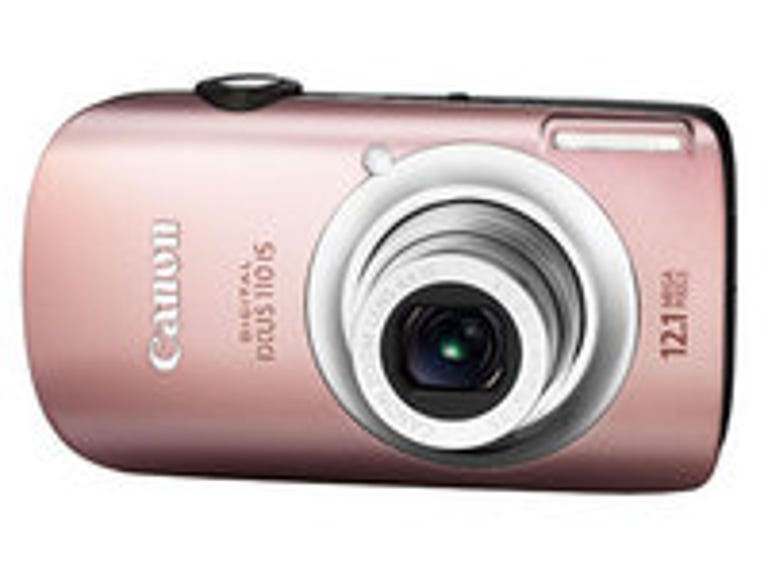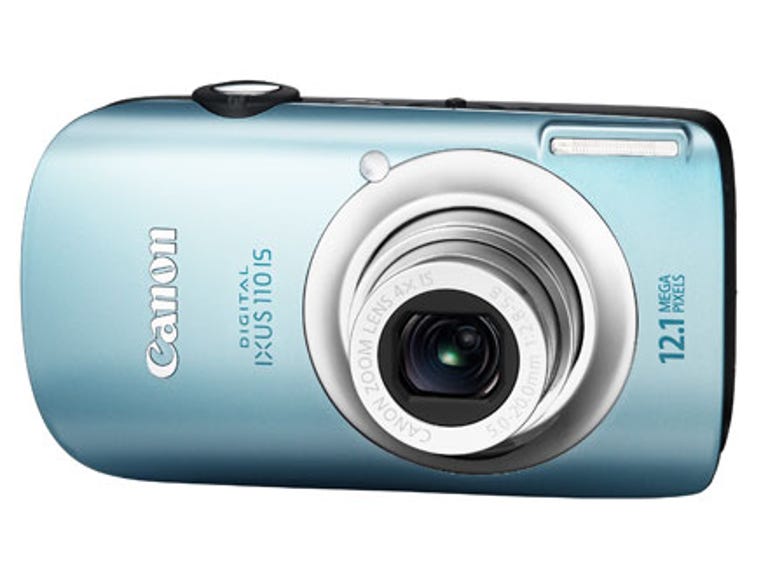 Why You Can Trust CNET
Why You Can Trust CNET Canon IXUS 110 IS review: Canon IXUS 110 IS
The 110 IS sacrifices quite a lot in order to accommodate its curious styling and additional features. Images aren't as great as we'd expect, but that doesn't mean they're not any good — you'll just have to do a bit more tweaking to get the best out of this camera.
When we reviewed the IXUS 100 IS recently, we commented that the only reason it didn't pick up an Editors' Choice award was because it lacked a wide-angle lens and a slightly longer zoom. The 110 IS fills in the gaps neatly where the 100 IS struggled, but is it enough to earn our unreserved praise? Read our review to find out.
The Good
The Bad
The Bottom Line
Design
It's not a flattering term, the one that first strikes you when you are presented with the Canon IXUS 110 IS. We thought the most apt term was "peculiar", given the camera's rotund exterior and elongated form factor. You're not quite sure which way it's supposed to sit, whether on its base or on its side — and by all accounts, everyone we presented this camera to was just as perplexed as we were.

In our video we likened the 110 IS to a mobile phone, given the curved elongated exterior and clam-like appearance. The rear of the camera is just as strange as the front, with two almond-shaped buttons for playback and menu control flanking the wheel, which all sit to the right of the 2.8-inch widescreen LCD. At the top, the power button, shutter button and function switch sit alongside each other, and there are three options to choose from: full automatic (with automatic scene detection), program and movie mode.
The 110 IS comes in a variety of colours, including a powder blue to a pretty in pink rendition, which we tested. Coated in a glossy finish rather than the brushed look we saw on the 100 IS, the cover is very susceptible to bumps and scratches, with the casing even slightly chipping in places if you knock it about a little too much. On close inspection, we think that Canon's design department was trying to come up with a successor to the much more aesthetically pleasing 870 IS.
Features
Comparing the 110 to its much more attractively styled brethren, the 100 IS, reveals the true advantages of this camera. Though it loses in the looks department, it picks up on most elements that we took issue with on the other camera. The 110 IS sports a wide-angle 28mm lens and a 4x optical zoom. HD video recording at 720p is also part of the package.
The widescreen LCD screen is an interesting inclusion because it allows you to take photos and movies as you'll see them in the 16:9 aspect ratio (in a reduced resolution though, at 9 megapixels or 4000x2248 pixels). That said, you'll also be able to take photos in the more standard 4:3 ratio as well. The sensor is the same as the 100 IS, at 12.1 megapixels, and most of the other extras like blink detection and scene selection in automatic mode are also present on this camera.
Performance and image quality
The camera starts up in 1.4 seconds and at first feels quite responsive. Then you come to take an image, and while actual shutter lag is fairly low, the delay between the camera taking the image and it being displayed on screen is rather lengthy. Overall, this camera is definitely not as responsive as the 100 IS, especially in taking and reviewing shots. The controls are also not as intuitive as the 100, especially when it comes to the scroll wheel. Even though you can essentially use the wheel as a four-way directional pad, with the interface images being shown on screen rather than on the buttons, we'd rather the simpler, more intuitive buttons that we found on the 100.
Colour saturation was not as pleasing as we saw on the 100 IS, nor was the general sharpness of images. In fact, we found the pictures had an almost vintage feel to them with washed out tones and the overall effect was a little flat. Chromatic aberration was also quite pronounced.
It's good to see that Canon hasn't pushed the bar too much in achieving hyper-real images; however, left in fully automatic mode you might be wondering why your photos look a little dull and lifeless. Of course, this can all be rectified by shooting in program mode and increasing the saturation by selecting vivid from the colour menu.
There's a fair amount of barrel distortion at the wide end too which is fairly disappointing, and noise control was nowhere near as good as we saw on the 100 IS either. In fact, in general use, in relatively well-lit situations, images at ISO 400 were incredibly noisy. The movie mode was pretty much the same as we saw on the 100 IS except that it now has a slightly wider field of view thanks to the wide-angle lens. There is still no way to use the optical zoom during recording though.
(In seconds (smaller is better))
| Time to first shot | Typical shot-to-shot time (flash) | Typical shot-to-shot time | Shutter lag (dim) | Shutter lag (typical) |
(Frames per second (larger is better))
Conclusion
The 110 IS sacrifices quite a lot in order to accommodate its curious styling and additional features. To maintain a sleek exterior, functionality and ease of use has been reduced and instead relegated to menus and sub-menus, and while still in keeping with the Canon conventions, it's a little more confusing than the implementation on the 100 IS. Images aren't as great as we'd expect, but that doesn't mean they're not any good — you'll just have to do a bit more tweaking to get the best out of this camera.


